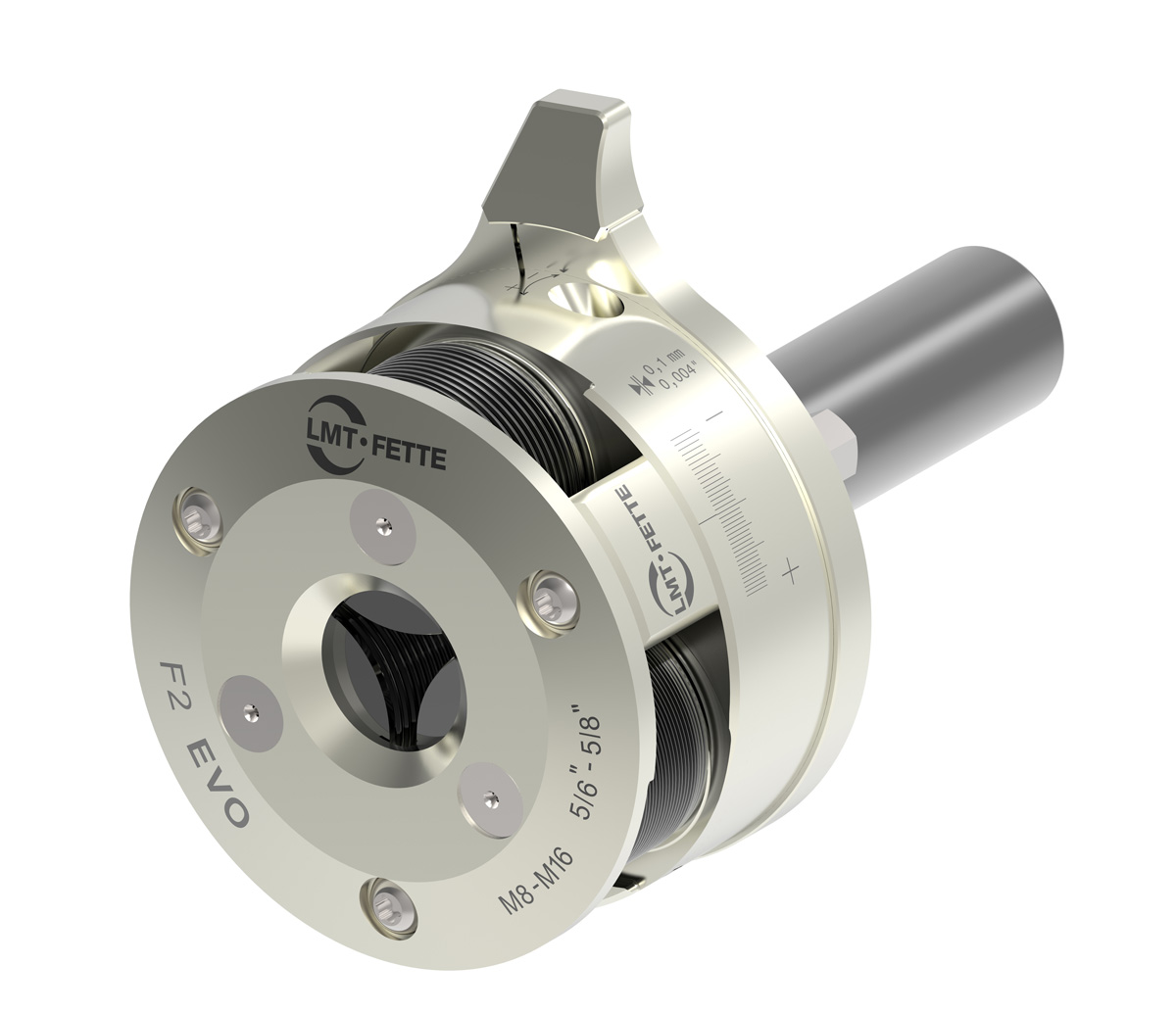Roll threading with a threading head on a Hydromat transfer machine required modification of the operating station of the machine to include an operating trigger mechanism to trip the threading attachment once it was in the correct position to thread.
The latest offering from LMT Fette is a unique EW style tool that uses the part as the trip mechanism. A rotating mandril inside the head is engaged by the part and collapses the tool on itself through a 4 millimeter air gap. This compression trips the tool activates the thread rolls and resets itself once the toll retracts. The mandril accurately positions the thread location and prevents any unwanted forward movement of the part from its gripping jaws. No special mechanism is required of the machine operating station. This eliminates the need for station modifications that typically add $20,000 to the machine cost. If no part is in position to thread no compression takes place and the head is not tripped removing potential for false tripping.
